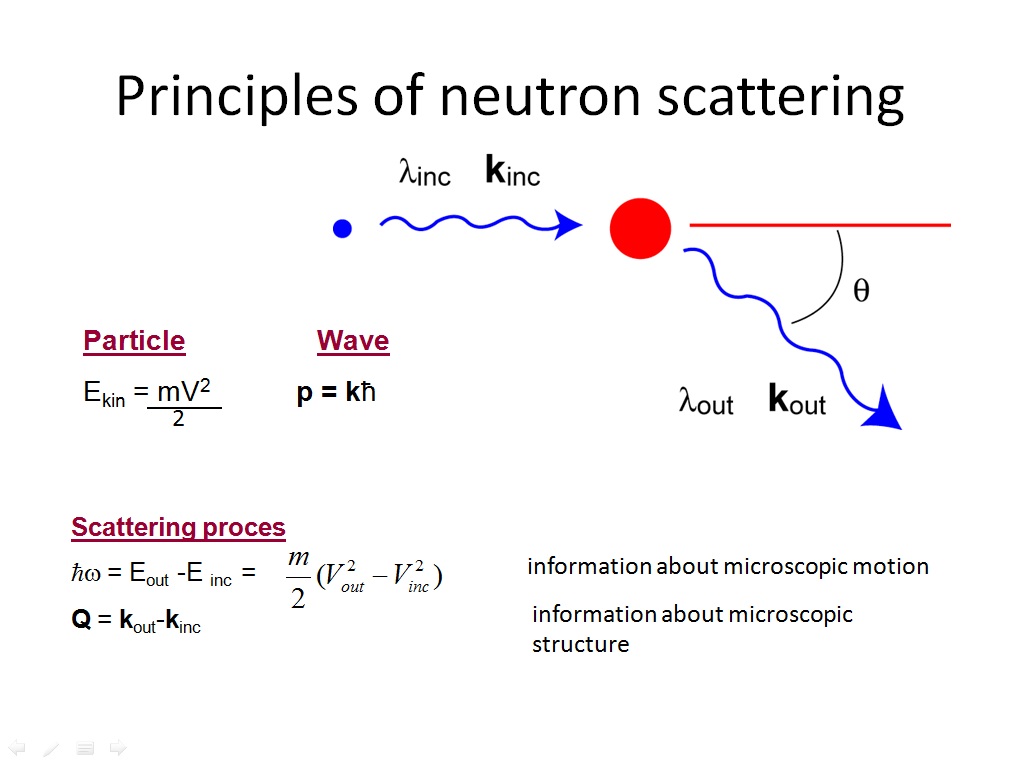Institute Electrochemical Energy Storage
Neutron Time-Of-Flight spectroscopy: how does it work and why do we need it?
Neutron scattering is a powerful, non-destructive probe for the investigation of structure and dynamics in matter in a broad space and time domain. The wavelengths and energies of thermal and cold neutrons are ideally matched to the microscopic and nanoscopic length and energy scales of processes in the materials that underpin technologies of the present and future: ranging from magnetic devices to semiconductors, composites to biomaterials and polymers. A particular strength of neutron scattering is neutron spectroscopy since it delivers direct information in both space and time (0.01 – 10 nm, 10-15 – 10-6 s, respectively), while other spectroscopic probes are either local (such as hyperfine field methods) or macroscopic in the spatial dimension (such as light scattering). Collective phenomena in nanoscale structured materials are often situated in the above mentioned mesoscopic time domain, as they tend to be slower than atomic scale motion in hard matter (typically 10-14 s).
Neutrons have the dual properties of both particles and waves. As particles they have a velocity and kinetic energy and as a wave they possess the wavelength, frequency and the wave vector: p=mV=hk=h/λ, Ekin= mV2/2=hf. During the scattering event, the direction of the neutron wave vector and its velocity can be changed by interacting with the microscopic structure and microscopic motion of the studied objects, respectively. Thus, analysis of these changes allows us to draw conclusions about the atomic motion and atomic structure.
There are different methods of measuring changes in neutron energy and wave vector. In Time-Of-Flight spectroscopy, neutrons are transported through the neutron guide from the reactor to the sample. Guides allow us to reduce the beam delivery losses and define direction of incoming neutrons. Further, the initial velocity of neutrons is defined by rotating mechanical discs with specially designed openings – neutron choppers. During the interaction with the sample, neutrons can change their velocity. These changes are detected by measuring the time of flight which neutrons need to pass the distance to reach the detector (therefore giving the method its name, Time-of-Flight). The direction of the scattered neutrons is defined by measuring the scattering angle corresponding to the position of the neutron detector.

